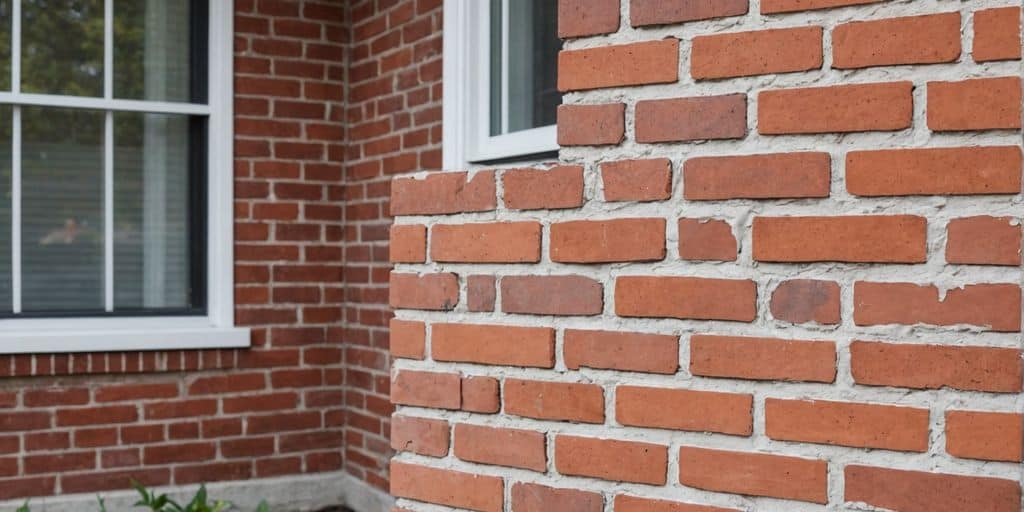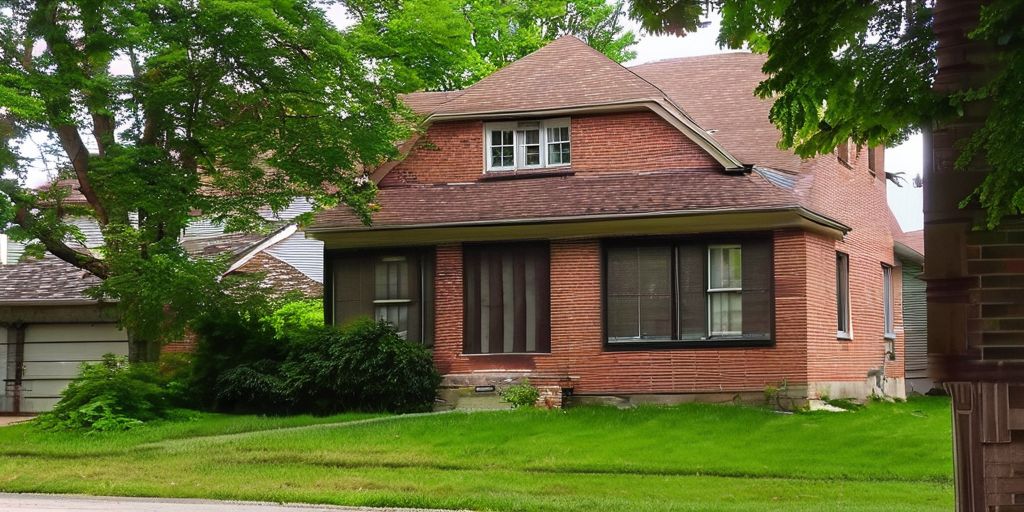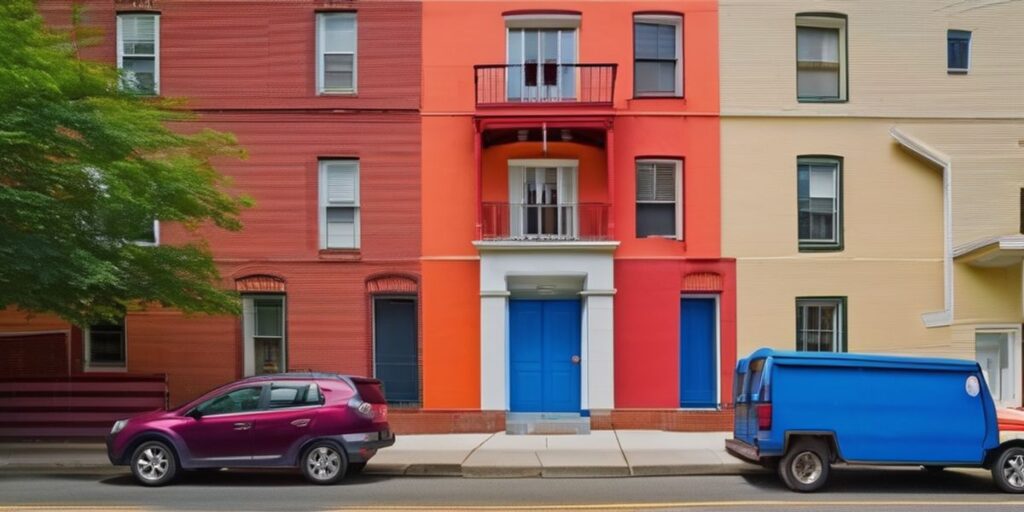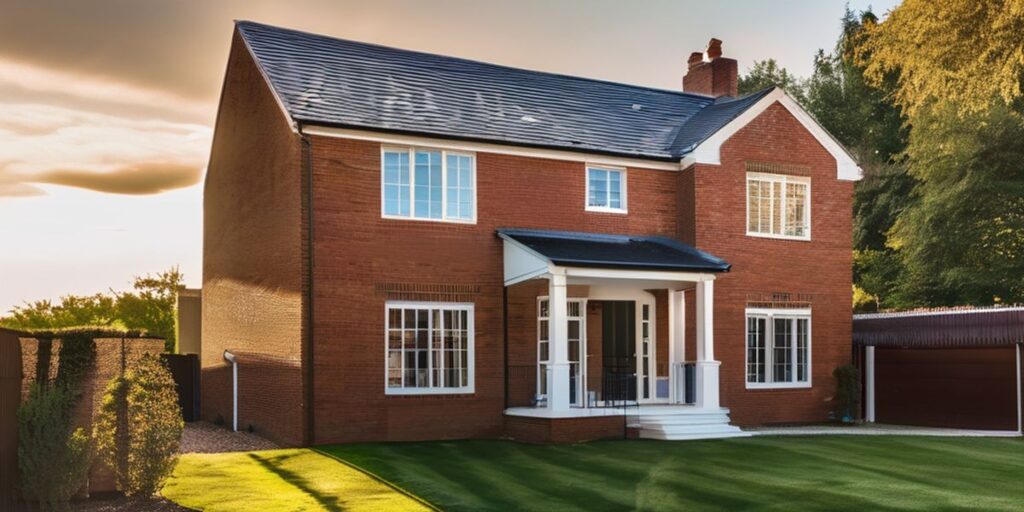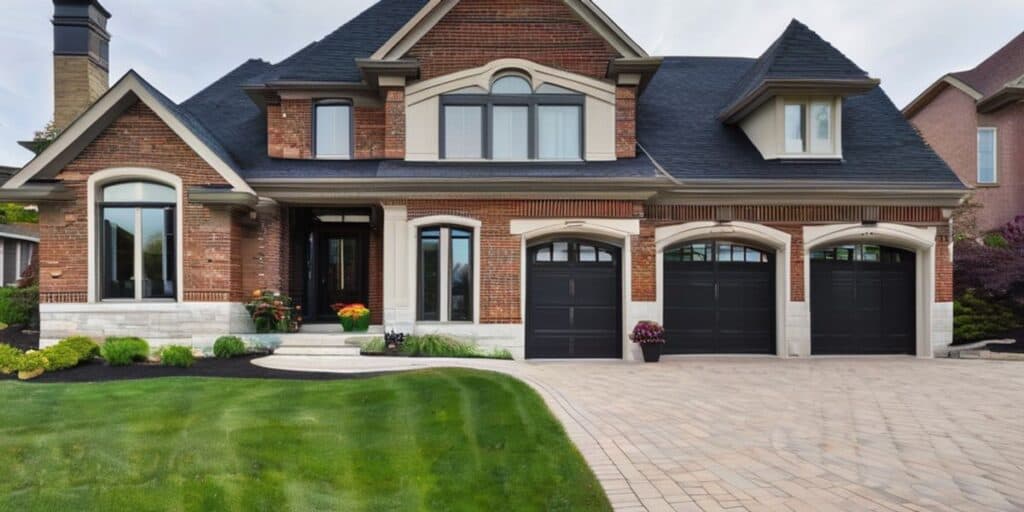Painting brick surfaces in Guelph can be tricky, but it can make your home look amazing if you know what to do. This article will help you understand the challenges and give you the best tips to get the job done right. From picking the right paint to dealing with weather, we’ve got you covered.
Key Takeaways
- Brick surfaces have unique challenges like porosity, moisture retention, and efflorescence that need special attention.
- Proper preparation, including cleaning, repairing, and priming, is crucial for a successful paint job on brick surfaces.
- Choosing the right type of paint, such as acrylic latex, elastomeric, or mineral-based paints, can make a big difference in the outcome.
- Using the right application methods, whether brushes, rollers, or sprayers, helps achieve a smooth and long-lasting finish.
- Weather conditions in Guelph, like humidity and temperature, play a significant role in the painting process and drying time.
Understanding the Unique Challenges of Brick Surfaces
Painting brick surfaces can be tricky due to their unique characteristics. Let’s explore some of the main challenges you might face.
Porosity and Texture
Brick is a porous material with a rough texture. This can lead to uneven paint coverage if not properly addressed. The tiny holes in the brick can absorb paint, making it difficult to achieve a smooth finish. Applying thin layers of paint and painting in the direction of the brick’s texture can help preserve the brick’s natural look.
Moisture Retention
Bricks can hold moisture, which can cause problems when painting. If the brick is not completely dry, the paint may not adhere properly and could peel off over time. It’s essential to ensure the brick is dry before starting your painting project. This is especially important in areas with high humidity, like Guelph.
Efflorescence Issues
Efflorescence is a white, powdery substance that can appear on brick surfaces. It occurs when water moves through the brick and brings salts to the surface. This can prevent paint from sticking properly. To deal with efflorescence, you need to clean the brick thoroughly before painting. Removing this powdery surface is crucial for a successful paint job.
Essential Preparation Steps for Brick Painting
Painting brick surfaces requires careful preparation to ensure a smooth and long-lasting finish. Here are the essential steps to follow before you start painting your brick surfaces in Guelph.
Thorough Cleaning Techniques
Before applying any paint, it’s crucial to clean the brick surface thoroughly. This helps remove dirt, grime, and any loose particles that could affect paint adhesion. Here are some effective cleaning methods:
- Pressure washing: This method is highly effective for removing stubborn dirt and debris.
- Hand scrubbing: Use a stiff brush and a mild detergent to scrub the surface.
- Chemical cleaners: For tough stains, specialized brick cleaners can be used.
Repairing Cracks and Damage
Inspect the brick surface for any cracks or damage. Repairing these issues is essential for a smooth finish. Follow these steps:
- Identify and mark all cracks and damaged areas.
- Use a masonry repair compound to fill in the cracks.
- Allow the repair compound to dry completely before proceeding.
Choosing the Right Primer
Selecting the appropriate primer is crucial for ensuring that the paint adheres well to the brick surface. A good primer will seal the porous surface and provide a uniform base for the paint. Consider the following types of primers:
- Masonry primers: Specifically designed for brick and other masonry surfaces.
- Latex-based primers: These are versatile and provide good adhesion.
- Oil-based primers: Use these cautiously, as they can trap moisture.
Proper preparation is the key to a successful brick painting project. Taking the time to clean, repair, and prime the surface will ensure a durable and aesthetically pleasing finish.
By following these steps, you can overcome the unique challenges of painting brick surfaces and achieve a beautiful, long-lasting result.
Selecting the Best Paint for Brick Surfaces
Choosing the right paint for brick surfaces is crucial for both aesthetic appeal and longevity. The best paint primer depends on the surface, where it’s located, and your preferred dry time. For brick surfaces, it’s essential to use paints that are specifically formulated to be breathable, allowing moisture to escape and preventing peeling or blistering.
Acrylic Latex Paints
Acrylic latex paints are often recommended for their durability and ability to expand and contract with the brick’s surface. These paints are breathable, which helps in preventing moisture buildup that can lead to peeling or blistering. They are also easy to clean and maintain, making them a popular choice for exterior painter projects.
Elastomeric Paints
Elastomeric paints provide a waterproof coating but should be used cautiously as they can trap moisture. These paints are highly flexible and can cover small cracks and imperfections in the brick surface. However, it’s important to ensure that the brick is completely dry before application to avoid moisture-related issues.
Mineral-Based Paints
For a natural look, consider using mineral-based paints which adhere well to masonry surfaces. These paints are breathable and allow moisture to escape, reducing the risk of peeling and blistering. They also offer a more traditional and natural appearance, which can be appealing for historic or older homes.
When painting brick, it’s important to avoid oil-based paints, as they can seal moisture in and lead to deterioration of the brick over time.
Remember, one-coat paints promise to eliminate multiple paint coats, but brick surfaces may require a different approach. It’s often better to apply multiple thin coats rather than one thick coat to ensure proper coverage and adhesion.
Effective Application Methods for Brick Surfaces
When painting brick surfaces, the method you choose can greatly impact the final look and durability. Here are some effective techniques to consider:
Using Brushes and Rollers
Brushes and rollers are traditional tools for painting brick. They are particularly useful for:
- Detail work: Brushes are great for getting into the mortar lines and small crevices.
- Large areas: Rollers can cover large sections quickly and evenly.
Advantages of Paint Sprayers
Paint sprayers offer several benefits over brushes and rollers, especially for larger projects:
- Even coverage: Sprayers can provide a more uniform coat, which is essential for porous surfaces like brick.
- Speed: They can cover large areas much faster than traditional methods.
Layering Techniques for Better Coverage
Applying multiple thin layers of paint is crucial for achieving a durable and attractive finish. Here’s why:
- Better adhesion: Thin layers adhere better to the brick surface, reducing the risk of peeling.
- Improved drying: Each layer dries more thoroughly, which helps in achieving a long-lasting finish.
Remember, patience and attention to detail during the application process will pay off in the appearance and longevity of the paint job.
In Guelph, where weather conditions can be unpredictable, planning your painting project around the forecast is essential. For instance, avoid painting on days when the humidity is high, as it can affect the drying time and adhesion of the paint.
Dealing with Guelph’s Weather Conditions
When painting brick surfaces in Guelph, weather conditions can significantly impact the project’s success. Proper timing is crucial to ensure that the paint adheres well and dries evenly. Here are some tips to consider:
Optimal Painting Seasons
- Monitor the weather forecast closely to choose the right time for painting. Avoid days with high humidity or chances of rain.
- Paint during the mildest part of the day, usually late morning or early afternoon, to avoid dew or frost.
- Allow ample drying time before the temperature drops in the evening or before any expected precipitation.
It’s essential to respect the natural drying process of paint to prevent issues such as cracking or peeling.
Handling Humidity and Temperature
- High humidity can affect paint drying and adherence. Aim for days when the humidity is low.
- Extreme temperatures, both hot and cold, can cause problems. The ideal temperature range for painting is between 50°F and 85°F.
- Be mindful of sudden temperature changes, which can be common in Guelph.
Drying Time Considerations
- Ensure that each coat of paint has enough time to dry before applying the next one. This is especially important in areas with fluctuating weather conditions.
- Use fans or dehumidifiers to help control the drying environment if needed.
- Remember that drying times can be longer in shaded areas or spots that don’t get much airflow.
Understanding the local climate patterns can also be beneficial. For instance, the proximity to the Speed River may influence weather conditions in Guelph, leading to more humid or windy scenarios that require additional considerations for outdoor painting projects.
Ensuring Long-Term Durability of Painted Brick
Ensuring the longevity of a painted brick surface involves more than just the initial application. To maintain the aesthetic appeal and structural integrity over time, consider the following points:
Regular Maintenance Tips
- Regular maintenance is key to longevity. This includes periodic cleaning to remove dirt and pollutants that can degrade the paint.
- Application of sealers can protect the paint from moisture penetration, a common cause of paint failure on brick surfaces.
- Use of high-durability coatings can significantly extend the life of the paint job, resisting wear and tear from environmental factors.
It’s important to address any signs of damage or wear promptly to prevent further deterioration.
Applying Sealers for Protection
- Sealers act as a barrier against moisture, which is crucial for brick surfaces that are prone to absorbing water.
- Choose a sealer that is compatible with the type of paint used to ensure optimal protection.
- Apply the sealer in thin, even coats to avoid any buildup that could affect the appearance of the brick.
Addressing Signs of Wear and Tear
- Regularly inspect the painted brick for any signs of chipping, cracking, or peeling.
- Touch up any damaged areas promptly to prevent further deterioration.
- Consider a full repaint every few years to keep the brick looking fresh and well-maintained.
By taking these steps, you can ensure that your painted brick surfaces remain durable and visually appealing for years to come. Whether you’re near the University of Guelph or in another part of the city, these tips will help you maintain the beauty and integrity of your brickwork.
Innovative Techniques for Enhancing Brick Aesthetics
Masonry Staining and Tinting
Masonry staining and tinting can transform the look of your brick surfaces. This technique involves applying a stain that penetrates the brick, offering a long-lasting color change. Staining can last up to 30 years, making it a durable option. Here are some benefits:
- Long-lasting color
- Natural appearance
- Variety of color options
Texture Blending
Texture blending is another innovative method to enhance brick aesthetics. This technique involves blending different textures to create a unique facade. It can be particularly useful for refreshing your brick fireplace or exterior walls. Benefits include:
- Unique appearance
- Enhanced visual interest
- Customizable to your taste
Incorporating Unique Color Schemes
Incorporating unique color schemes can make your brick surfaces stand out. Whether you choose bold colors or subtle shades, the right color scheme can elevate your space. Consider these tips:
- Choose colors that complement your home
- Use contrasting colors for a bold look
- Consider the surrounding environment, like the colors of nearby buildings or natural features
By taking these factors into account, you can improve the likelihood of a lasting and aesthetically pleasing finish on your brick painting project.
Discover new ways to make your brick walls look amazing with our innovative techniques. From unique painting methods to creative finishes, we have everything you need to transform your home. Visit our website to learn more and see how we can help you achieve the perfect look for your brick surfaces.
Conclusion
Tackling brick surface challenges in Guelph’s painting projects might seem tough, but with the right approach, it’s totally doable. By cleaning, repairing, and priming your brick surfaces properly, you set the stage for a successful paint job. Choosing the right paint and paying attention to the weather can make a big difference too. Remember, patience and careful planning are your best friends in this process. With these tips, your home can become the standout beauty of the neighborhood!
Frequently Asked Questions
What types of paint work best on brick surfaces?
Acrylic latex paint, elastomeric paint, and mineral-based paint are all good choices for painting brick surfaces.
Is it necessary to prime brick before painting?
Yes, priming is important to help the paint stick better and last longer on brick surfaces.
How should I prepare a brick surface for painting?
First, clean the brick well, fix any cracks or damage, and then apply a suitable primer.
Can I paint brick surfaces in cold or rainy weather?
It’s best to avoid painting in cold or wet weather to ensure the paint dries properly and sticks well.
What tools are best for painting brick surfaces?
You can use rollers, brushes, or paint sprayers depending on the size and specifics of your project.
How can I make sure the paint on brick lasts a long time?
Use high-quality paint, apply multiple coats, and consider using a topcoat or sealer for extra protection.

